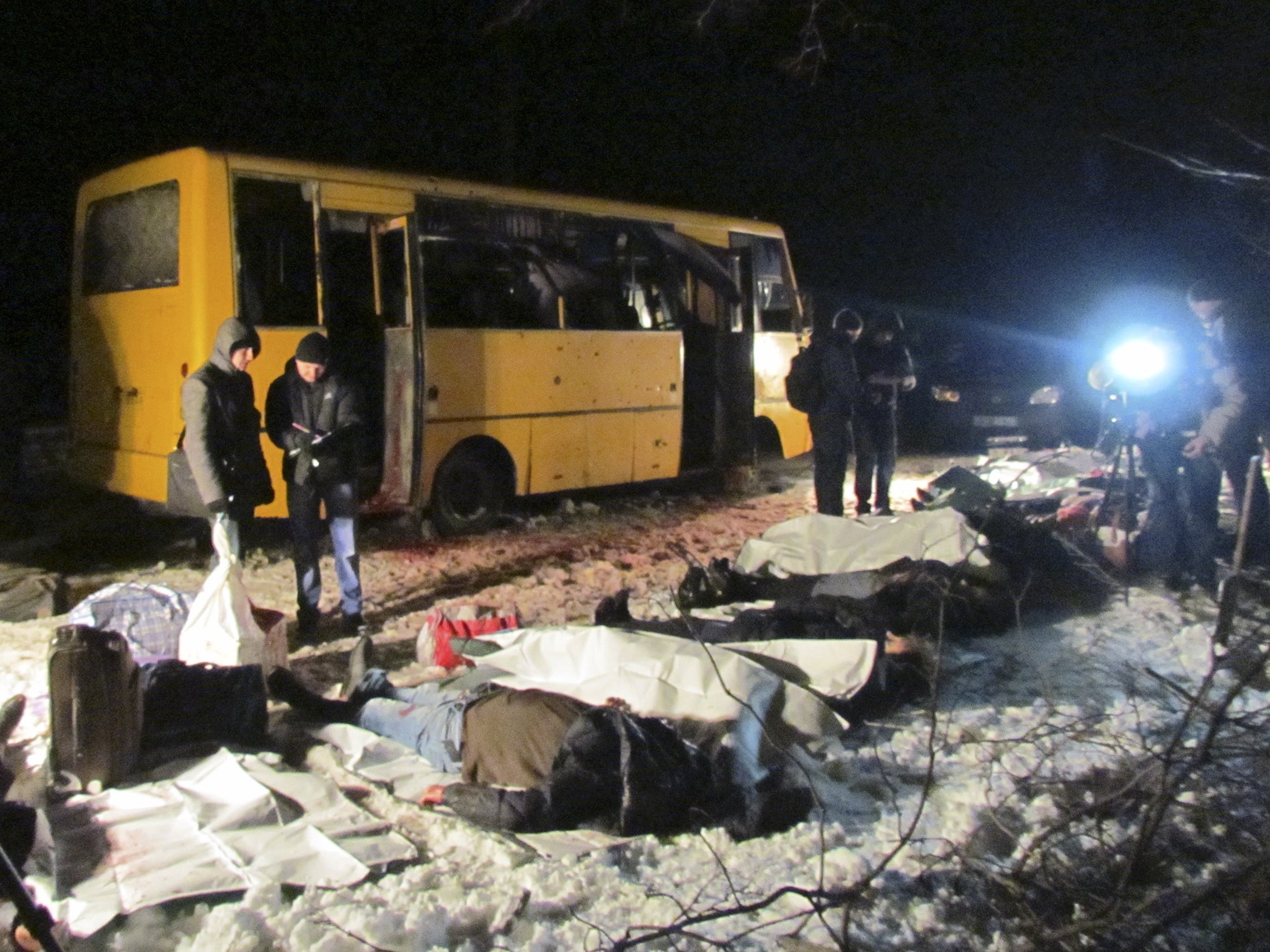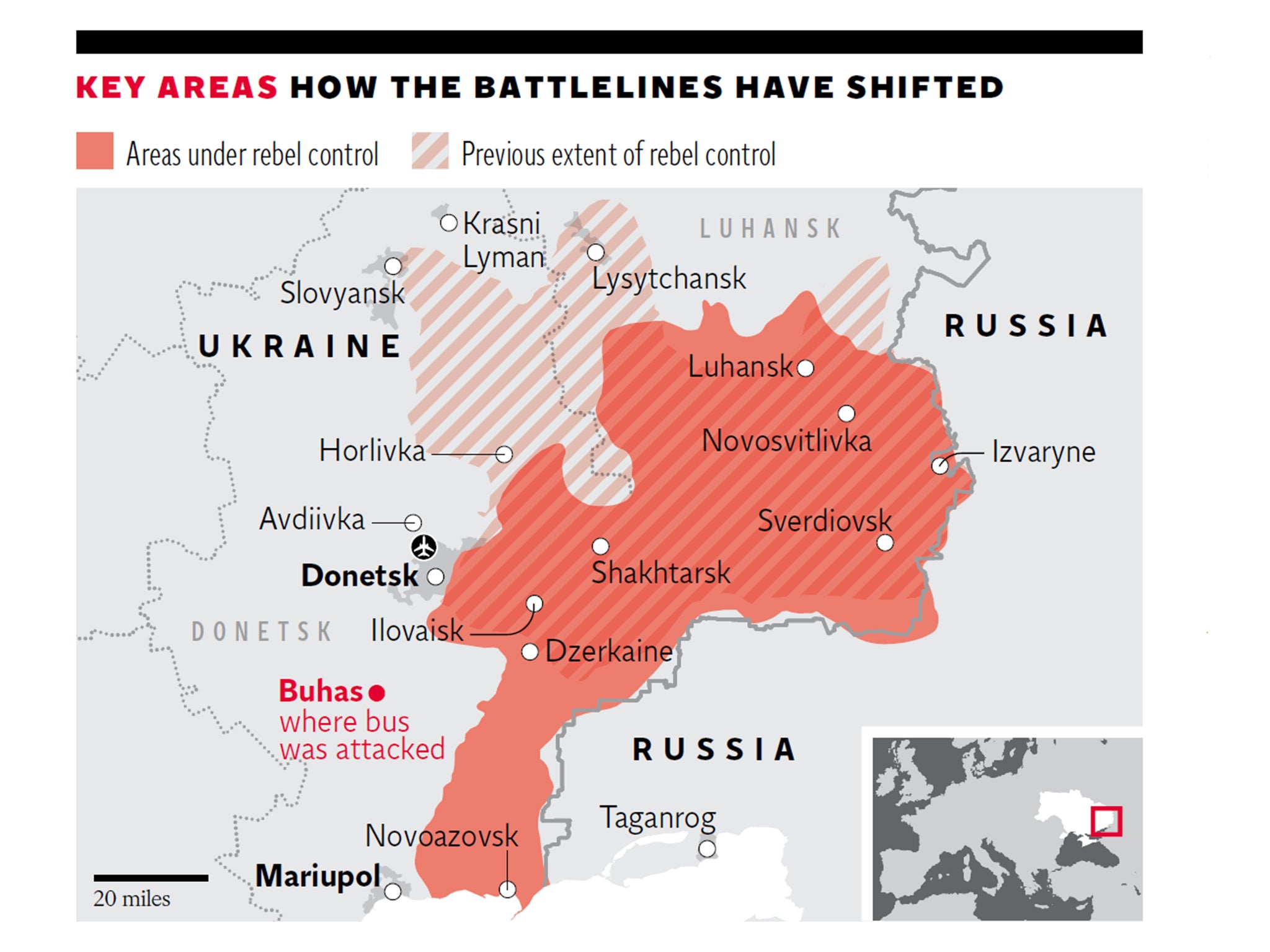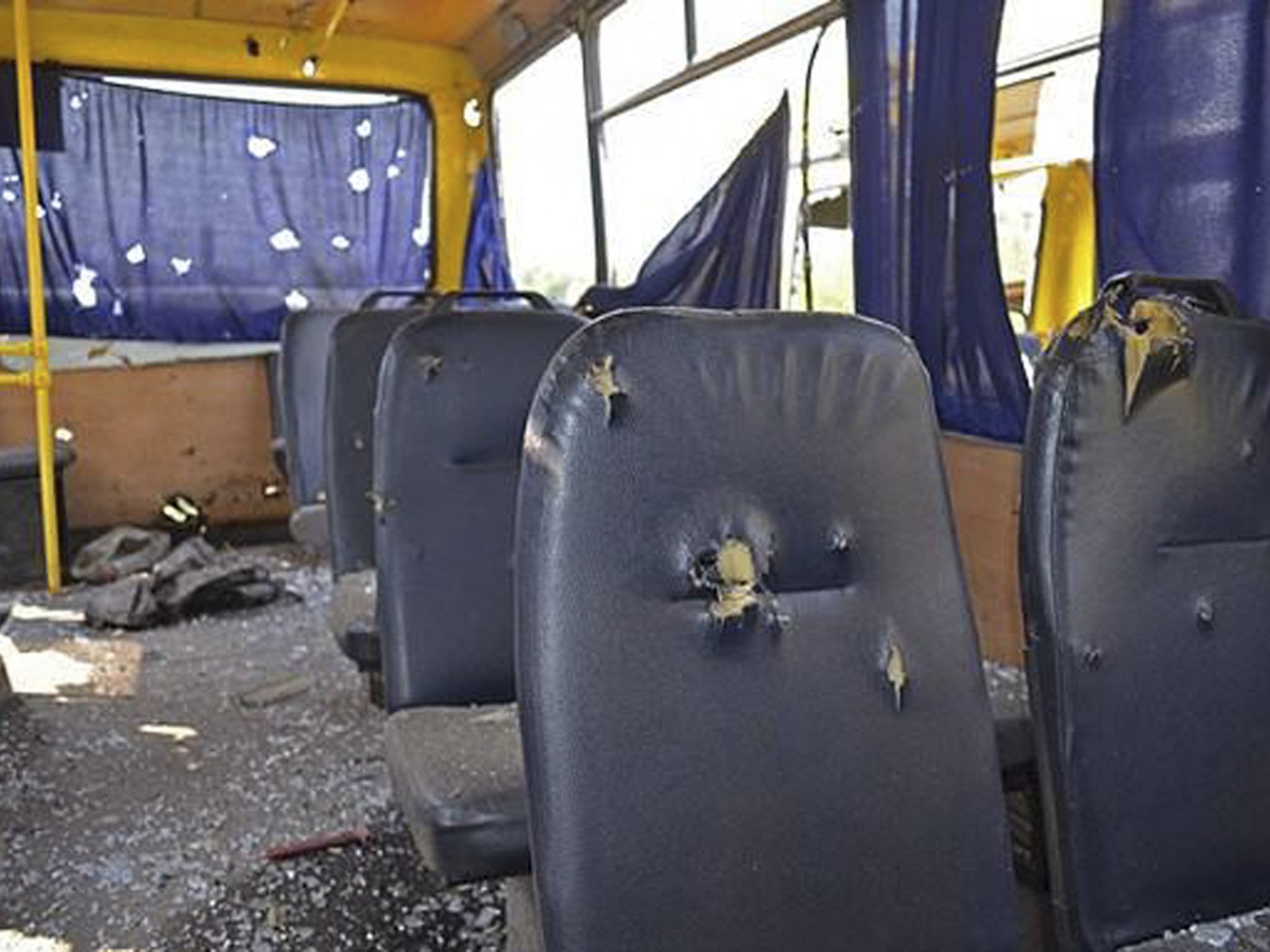Ukraine crisis: Residents flee savagery of the battle for Donetsk's airport
Families returning to their homes are caught up again in renewed hostilities between Ukrainian forces and Russian-backed rebels

Your support helps us to tell the story
From reproductive rights to climate change to Big Tech, The Independent is on the ground when the story is developing. Whether it's investigating the financials of Elon Musk's pro-Trump PAC or producing our latest documentary, 'The A Word', which shines a light on the American women fighting for reproductive rights, we know how important it is to parse out the facts from the messaging.
At such a critical moment in US history, we need reporters on the ground. Your donation allows us to keep sending journalists to speak to both sides of the story.
The Independent is trusted by Americans across the entire political spectrum. And unlike many other quality news outlets, we choose not to lock Americans out of our reporting and analysis with paywalls. We believe quality journalism should be available to everyone, paid for by those who can afford it.
Your support makes all the difference.Like the populations of other shelled districts in Ukraine’s war-torn east, the residents that can, have left Oktyabrsky. The vulnerable and least mobile have remained.
Donetsk’s low-rise district is sandwiched in between the city airport and station to the south. It is perhaps the most affected of all residential areas by fierce fighting between Kiev and rebels.
One of those families evacuated today was orphan Igor Politayev, 11, together with his grandmother, Lilia Tupikova, 60, and great-grandmother, Anna Nikolaevna, 81.
Their home in Oktyabrsky, around a mile from the airport, was largely destroyed when a mortar landed in the morning of 28 September. Igor, left with life-threatening injuries to his intestines, spine and face, struggles to this day with headaches and blackouts.
After spending six weeks in hospital, the family returned to live with their neighbours only for hostilities to return with this week. Lilia Tupikova told The Independent they had hoped, after the supposed Minsk “ceasefire” in September and relative calm thereafter, that better times were coming. “We realised we needed to move when we saw Igor falling to the floor at every sound,” Mrs Tupikova said.
Donetsk, like Igor, remains on edge. Heavy fighting between Ukrainian forces and Russian-backed rebels has resumed with renewed savagery. On Tuesday, a passenger bus on the busy Donetsk-Mariupol highway to the south of the city, was shelled. At least 12 people died and 16 passengers were injured, some critically.
At checkpoints later that day, Russian-backed rebels were noticeably nervous, those nerves occasionally spilling over into aggression. They and their supporters have been keen to place the blame on the Ukrainian side, arguing shrapnel damage to the bus was more consistent with anti-infantry mine somehow detonated near the checkpoint.
Footage from CCTV videos released, however, seemed to rule out this possibility, showing a number of rockets landing in and around the checkpoint, and from the direction of towns currently controlled by Russian-backed rebels.

Independent observers concluded the injuries to people and damage to the bus were consistent “with high-energy rockets” landing near the bus. The blast coincided with a renewed push by Russian-backed rebels to take Donetsk’s airport, in the north of the city, near Oktyabrsky.
At one time, Donetsk airport was considered a strategic point for both sides. For the rebels, it was a stronghold to push on further into the region. For the Ukrainians it was an “achilles heel” to prevent full rebel control of the city.
Increasingly, however, the airport has become a symbolic fight for the Ukrainians: images are widely distributed of heroic government soldiers defending the airport against the odds from “external aggressors”.
But today, during a day of national mourning for those killed in the bus shelling, separatists claimed they had captured the airport’ s civilian terminal, which had been part of the building under Kiev’s control. A rebel flag was seen being hoisted over the building as fighting continued.
Rebel leader Aleksandr Zakharchenko declared his forces were poised to take the airport “within the day”. With visible swagger, he used his midday press conference to invite OSCE monitors to accompany him to the airport for a victory march. While the OSCE mission made two independent attempts to reach the airport, intense fighting caused them to turn back.
Ukrainian forces, however, seem to be in control of other parts of the airport, like the meteorological tower, destroyed control tower and, crucially, artillery positions in the nearby village of Peski.

Borys Humenyuk, deputy commander of OUN battalion, one of three Ukrainian divisions based around the airport, said his soldiers were still fighting. “There has been no order to retreat,” he said.
Alexei Purgin, a major figure in the rebel Donetsk People’s Republic, told The Independent it was “too early” to talk about full rebel control of the airport. “Open battle is ongoing, and while the terminals are ours, the Ukrainians have lots of places to hide”, he said.
Whatever the result of the battle for the airport, it seems neither side will accept defeat lightly. The long-term prospects of the conflict - fuelled by Russia but which is increasingly on taking on internal, civil dimensions - were underlined on Thursday by the order of President Poroshenko to institute three new waves of mobilisation to crush the rebels. In the absence of a functioning state, the only hope for these people is the voluntary aid workers, who work with limited resources to evacuate, clothe, feed and provide medicine for the population. The other option, taken by thousands in Donetsk’s residential districts, is to flee.
Crisis: From protests to war
Ukraine’s crisis and the bloodshed that followed began with small protests in Kiev in November 2013, when the then President, Victor Yanukovych, abandoned plans to sign the EU-association agreement, instead aligning Kiev firmly with Russia.
What followed – Mr Yanukovych’s flight to Russia and mass rallies in the Maidan – led to Moscow’s annexing of Crimea in March last year. Ukraine was divided, between east and west.

Russian-backed rebels controlled much of the Donetsk and Luhansk regions. Fighting was fierce, particularly in Donetsk, Slavyansk and Mariupol, and by last summer much of the country’s east was abandoned by its residents.
Kiev, by that time, had a new leader called Petro Poroshenko, who brought new hopes of peace. Then, on 17 July, Malaysia Airlines flight MH17 was shot down near the village of Grabove by a missile fired from rebel territories. Russia was accused, but it denied providing the weapons to rebels that allowed them to shoot down the passenger jet, killing 298 people.
The fighting continued throughout the summer.
In September, representatives from Kiev and the rebel factions signed the Minsk agreement to stop fighting. The ceasefire lasted less than a week, and two months later Nato directly accused Moscow of arming the rebels. A truce was called in December aimed at restoring peace. So far, more than 4,700 people have been killed in the fighting, including at least another 12 killed when their bus was hit by a rebel shell on Tuesday, near Donetsk.
In Kiev today, the Ukrainian parliament approved a presidential decree for three waves of military mobilisation this year, motivated by the worsening security situation.
Join our commenting forum
Join thought-provoking conversations, follow other Independent readers and see their replies
Comments